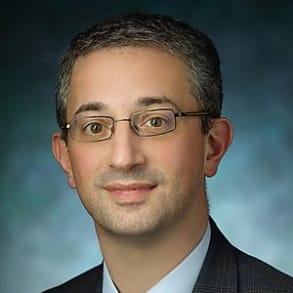Johns Hopkins orthopaedic oncologist Adam Levin discusses frequently asked questions about limb salvage reconstruction for children, including complications associated with the procedure and which patients are good candidates.
Our primary goal is always to save the patient's life first and then to preserve function as a close second, whenever we can do a procedure that is able to remove the tumor, the way that it needs to be removed. Our next goal is to ensure that we have optimal function as a result of it. Whenever we can do both of those as well, if not better than an amputation, which would be the primary alternative. We're always going to choose the limb salvage approach whenever appropriate, we work very closely with the rest of our colleagues across the cancer center and the Children's Center to make sure that we have the best experts in every aspect of the clinical care from non operative oncological care together with the operative sphere. So outside of the operating room, we're working intimately with our colleagues in medical oncology, pediatric oncology, radiation oncology, and in the operating room, we really work very closely, particularly with our plastic surgery colleagues, but also sometimes with our vascular surgeons and other uh experts across the health system in patients that have limb length, discrepancies or limb length differences. We will often want to do other procedures down the line to try to even out the limb lengths uh between the right and the left side. In those that do not have limb length discrepancies, we usually try to do biologic reconstructions whenever we can using living tissue or biologic tissue to reconstruct the limb. When we do that, we sometimes do need to do additional procedures like bone grafting to help improve the bone healing of that segment. When we're doing uh reconstructions that require implants, metal implants that have some plastic pieces. Our intent is to have Children and even adults that way, outlive the longevity of what these implants can tolerate. We want our patients to use these implants and as they use it for a long period of time, they're gonna wear out some of the plastic components. And so we do anticipate that down the line years down the line. We're gonna need to do some additional procedures to keep things moving properly. The complications associated with these procedures are largely dependent upon either what needs to be removed together with the tumor to get it safely out of the patient and how we reconstruct it down the line. Sometimes our reconstruction uh requires some removal of the growth plate which can lead to some uh limb length discrepancies over time. But primarily our concerns are with what needed to be removed together with the tumor to get it out safely. We've really defined the field together with our plastic surgery, colleagues of functional restoration in these patients to do functional muscle transfers, nerve transfers. So if we did need to remove some muscle or nerve, we can go and restore function to the highest degree in ways that we've never been able to do in the past.
Related Presenters
